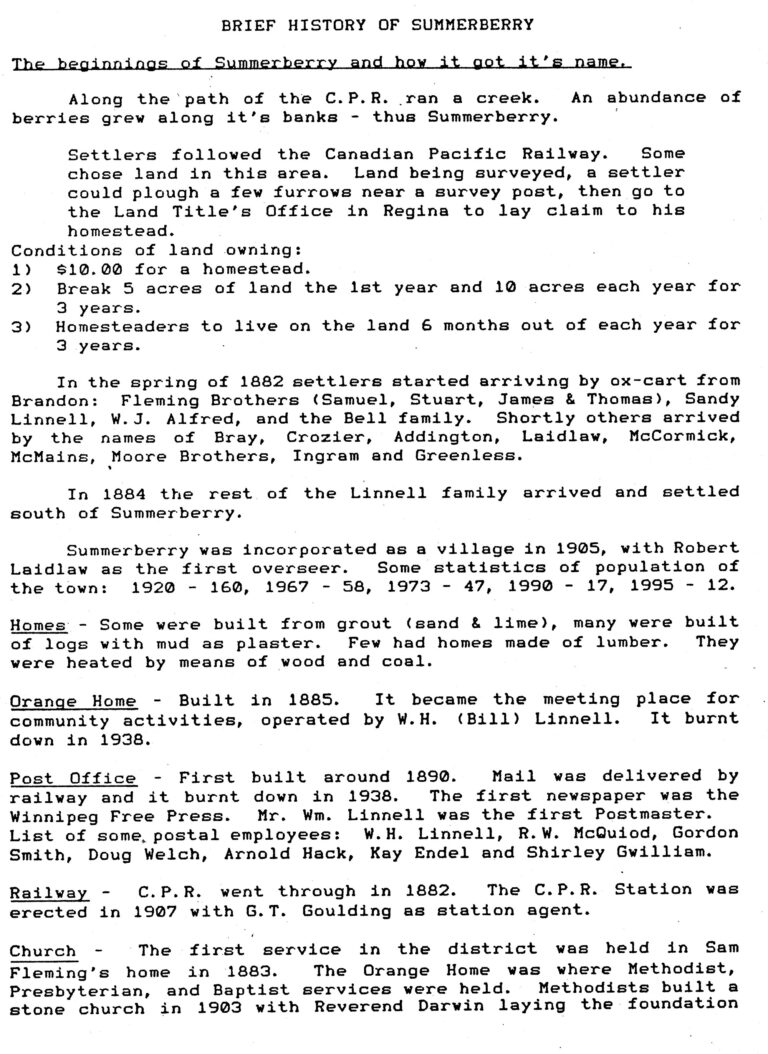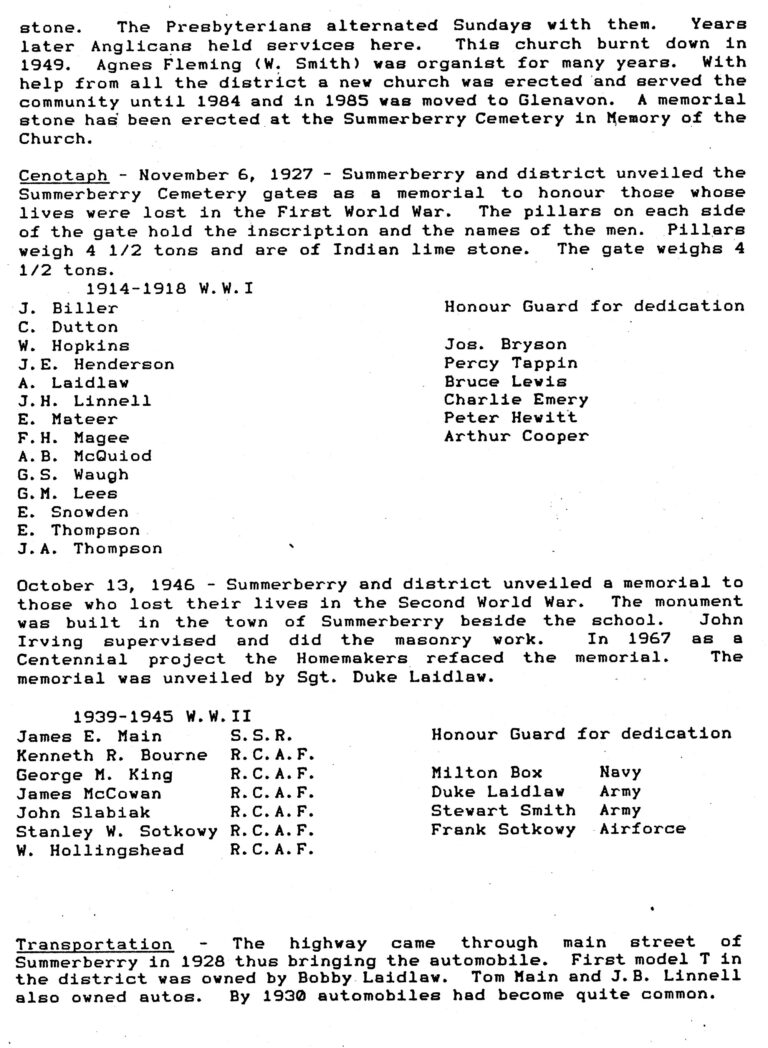Some History
I ended up with a typed booklet several years ago that contained a history of Summerberry along with some other information about businesses and people. I don’t know who compiled the booklet but it seems fairly accurate. Pictures of the pages are listed below but here is a bit of the first page and a few lines from the second.
Brief History of Summerberry
The beginnings of Summerberry and how it got its’s name.
Along the path of the CPR ran a creek. An abundance of berries grew along it’s banks – thus Summerberry.
Settlers followed the Canadian Pacific Railway. Some chose land in this area. Land being surveyed, a settler could plough a few furrows near a survey post, then go to the Land Title’s Office in Regina to lay claim to the homestead.
Conditions of land owning:
- $10.00 for a homestead.
- Break 5 acres of land the 1st year and 10 acres each year after for 3 years.
- Homesteaders to live on the land 6 months out of each year for 3 years.
In the spring of 1882 settlers started arriving by ox-cart from Brandon: Fleming Brothers (Samuel, Stuart, James and Thomas), Sandy Linnell, W.J. Alfred, and the Bell Family. Shortly others arrived by the names of Bray, Crozier, Addington, Laidlaw, McCormick, McMains, Moore Brothers, Ingram and Greenless.
In 1884 the rest of the Linnell family arrived and settled south of Summerberry.
Summerberry was incorporated as a village in 1905, with Robert Laidlaw as the first overseer. Some statistics of population of the town: 1920 – 160, 1967 – 58, 1973 – 47, 1990 – 17, 1995 – 12.
Homes – Some were built from grout (sand and lime), many were built of logs with mud as plaster. Few had a home of lumber. They were heated by means of wood and coal.
Orange Home – Built in 1885. It became the meeting place for community activities, operated by W.H. (Bill) Linnell. It burnt down in 1938.
Post Office – First built around 1890. Mail was delivered by railway and it burnt down in 1938. The first newspaper was the Winnipeg Free Press. Mr. W.M. Linnell was the first Postmaster. List of some postal employees: W.H. Linnell, R.W. McQuiod, Gordon Smith, Doug Welch, Arnold Hack, Kay Endel and Shirley Gwilliam.
Railway – CPR went through in 1882. The CPR Station was erected in 1907 with G.T. Goulding as Station Agent.
Church – The first service in the district was held in Sam Fleming’s home in 1883. The Orange Home was where the Methodist, Presbyterian, and Baptist services were held. Methodists built a stone church in 1903 with Reverend Darwin laying the foundation stone. The Presbyterians alternated Sundays with them. Year later Anglicans held services there. This church burnt down in 1949. Agnes Fleming (W. Smith) was organist for many years. With help from all the district a new church was erected and served in the community until 1984 and in 1985 was moved to Glenavon. A memorial stone has been erected at the Summerberry Cemetery in memory of the church.
Below are 3 pages from the History Booklet. Click on any of them for a larger view of the picture.
In 2003 the National Film Board of Canada produced a TV documentary entitled “The Longest Road.” It followed one individuals journey across Canada on the # 1 Highway. At Summerberry they stopped to film a segment with Shirley Gwilliam. This short 2.38 minute video Shirley’s portion digitized. The segment takes place in the east classroom in the stone school.


